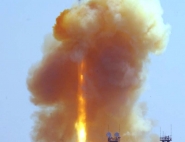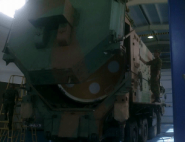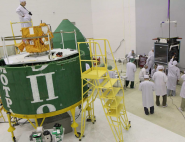Satellites
Prisma comprised two satellites:
- Mango, the main satellite, weighed 140 kg. It was equipped with a 3-axis attitude control system based on reaction wheels and 3-axis delta-V capabilities
- The target satellite, Tango, weighed 40 kg and was equipped with a 3-axis attitude control system based on magnetometers, stellar sensors and magnetorquers.
![]()
![]()
Instruments location on Mango (left) and Tango (right) satellites
The satellites’ relative position was measured by various sensors depending on the ongoing experiment and the distance separating both spacecraft:
- Differential GPS: the differential GPS system, developed by the DLR, was the primary relative positioning system for Prisma satellites. Experiments involved inter-satellite distances of under 30 m. The system was based on a Phoenix receivers and antenna array with built-in redundancies on each satellite.
- Vision Based Sensor (VBS): based on a stellar sensor used in several microsatellite missions, delivered by the Technical University of Denmark (DTU), this sensor will be used to identify Tango as a non-stellar object from distances of up to 500 km, and to track the target satellite down to a 10-metre distance during a series of planned autonomous approach manoeuvres.
- The RF metrology subsystem (FFRF): Designed to handle the first level of omnidirectional metrology and delivered by CNES, the FFRF will work for distances from 3 m to 30 km.
The main satellite is equipped with several sensors: magnetometers, solar sensors, angular rate sensors, accelerometers, stellar sensors and VBS, GPS receivers, an FFRF Terminal, and three antennas. These last elements are part of the Ffiord experiment.
The target satellite is equipped with the following sensors: magnetometers, solar sensors, GPS receivers, an FFRF Terminal, and three antennas. These last elements are part of the Ffiord experiment.
![]()
![]() The two satellites were joined together for launch and placed into orbit by a Dnepr launch vehicle along with the CNES Picard satellite.
The two satellites were joined together for launch and placed into orbit by a Dnepr launch vehicle along with the CNES Picard satellite.
They were placed in a sun-synchronous, 710 km, low-Earth orbit (LEO).
The mission lasted 10 months and was controlled from Solna, Sweden.


